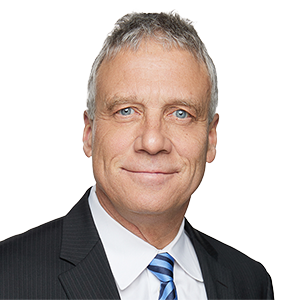On February 24, Bill 172, the Climate Change Mitigation and Low-carbon Economy Act (the Act), was introduced in the Ontario legislature, as discussed in our previous bulletin. This Act set out the broad outline of a cap-and-trade program for Ontario. On March 10 it passed second reading and was referred to the Standing Committee on General Government. The corresponding draft regulation (the Regulation) has also been revealed and opened for public comment. The Regulation contains far more specificity regarding the cap-and-trade program, including such details as: who will be regulated by the program, when the regulation will begin, how the emission allowance market will operate, and more.
Who does the program apply to?
Since 2011, a growing number of entities have been required to file reports on their greenhouse gas (GHG) emissions under the existing Greenhouse Gas Emissions Reporting Regulation. Entities already required to report their GHG emissions include:
- Industrial or institutional facilities that emit at least 25,000 tonnes of GHG emissions per year;
- Natural gas distributors that are attributed at least 25,000 tonnes of GHG emissions per year;
- Petroleum product suppliers that supply at least 200 litres of petroleum products per year; and
- Electricity importers who import more than zero megawatt hours of electricity per year.
Anyone who falls into one of these four categories listed above will become a mandatory participant in the cap-and-trade program. While electricity importers are captured by the program, electricity generators are exempt if: the primary activity engaged in at the facility is electricity generation; no products are produced at the facility other than electricity and any heat, steam or gas by-product; the facility does not receive natural gas directly from an international or inter-provincial natural gas transmission pipeline; and no electricity is generated from incinerating waste.
Other participants can opt in as voluntary participants, and those who wish to participate in the auctions can register as market participants. Those who are not registered participants will not be permitted to participate in the auctions or purchase emission allowances.
Roll-out of the cap-and-trade program
The Regulation will be rolled out over a number of years, with the first compliance period running from January 1, 2017, to December 31, 2020. In the first year, 142,332,000 emission allowances will be created, with each allowance equivalent to one tonne of carbon dioxide equivalent.
Each year, the total amount of emission allowances will decrease, following the below table:
| Year |
Number of Allowances |
| 2017 |
142,332,000 |
| 2018 |
136,440,000 |
| 2019 |
130,556,000 |
| 2020 |
124,668,000 |
At the end of the compliance period, mandatory and voluntary participants would be required to submit allowances equal to their GHG emissions over that period. Specifically, the greenhouse gases and other contaminants included in this program are carbon dioxide, methane, nitrous oxide, hydrofluorocarbons, perfluorocarbons, sulphur hexafluoride, and nitrogen trifluoride.
The second compliance period would run from January 1, 2021, to December 31, 2024, and each subsequent three-year period would be a new compliance period.
Industrial and institutional sectors would receive their emission allowances for free until 2020, when the second compliance period begins, at which point the assistance level would be reassessed. The calculation method for how many free emissions credits to allocate to each facility varies based on the sector. Allocations would be granted based one or more of the below methods:
- Product output benchmark allocation
- This method of calculation would be used for products such as iron, steel, grey cement, beer, and hydrogen.
- History-based allocation
- This method would be used for products such as white cement, glass, ammonia, nitric acid, carbon black, ethylene, refinery feed, styrene, magnesium, high-calcium lime, dolomite, Dolopel, brick, mineral wool insulation, copper, and nickel.
- Direct allocation method
- This method would be used for certain facilities including: Carmeuse Lime Canada, Terra International (Canada) Inc., London Health Sciences Centre, Hamilton Health Sciences Corporation, Emerald Energy From Waste Inc., Clean Harbors Canada, Inc., and a variety of universities.
- Energy use-based allocation
- This method would be used for facilities not using the methods listed above.
If a mandatory or voluntary participant began reducing its emissions before the roll-out of this program, it may also be eligible for early reduction credits to recognize its earlier actions. However, if a facility is already eligible for free allocation under the product-output benchmark method, its emissions would not also be eligible for early reduction credits.
Offset credits for emission reductions are also intended to be implemented as part of the cap-and-trade program, but are anticipated to be detailed in a separate future regulation.
Market mechanisms
Emission allowances will be auctioned off by the minister each year in four separate auctions, each with one single round of bidding. In each auction, emission allowances will be auctioned in lots of 1,000. No mandatory or voluntary participants can buy more than 25% of the emission allowances for sale at an auction, and no market participants can buy more than 4%.
The reserve price of the auction (that is, the minimum price level for emission allowances sold) will be linked with Quebec and California in 2017. Outside of the auctions, 5% of the emission allowances will be available for sale to mandatory and voluntary participants. Between auctions and sales of emission allowances, the Ontario government expects to raise approximately $1.3 billion in the first year of the program.1
While there are minor differences between the Ontario program and Quebec and California, the proposed Ontario system incorporates the essential features of the Quebec and California systems.
Based on our experiences in Quebec, where the government has worked collaboratively with California to address cross-jurisdictional issues as they arise, we hope Ontario will develop the same strong working relationships. This will allow all three jurisdictions to work together, creating confidence in the systems and paving the way for Ontario to participate in joint auctions. The Quebec program was launched January 1, 2013, and linked to California’s system on January 1, 2014. The first joint auction between Quebec and California took place on November 24, 2015.
Summary
The Regulation outlines a complex process for who will be required to participate in the cap-and-trade system and how that system will function. Given the similarities and intentional alignment with the system already in place in Quebec, one can look there for guidance on how the system could function in practice.
The Regulation will be open for public comment until April 10, 2016, so there could be changes based on the input received, and therefore nothing has been finalized yet.
The author wishes to thank Kira Misiewicz, articling student, for her assistance in preparing this legal update.
Footnote
1. http://www.cbc.ca/news/canada/toronto/ontario-budget-1.3461834 .




